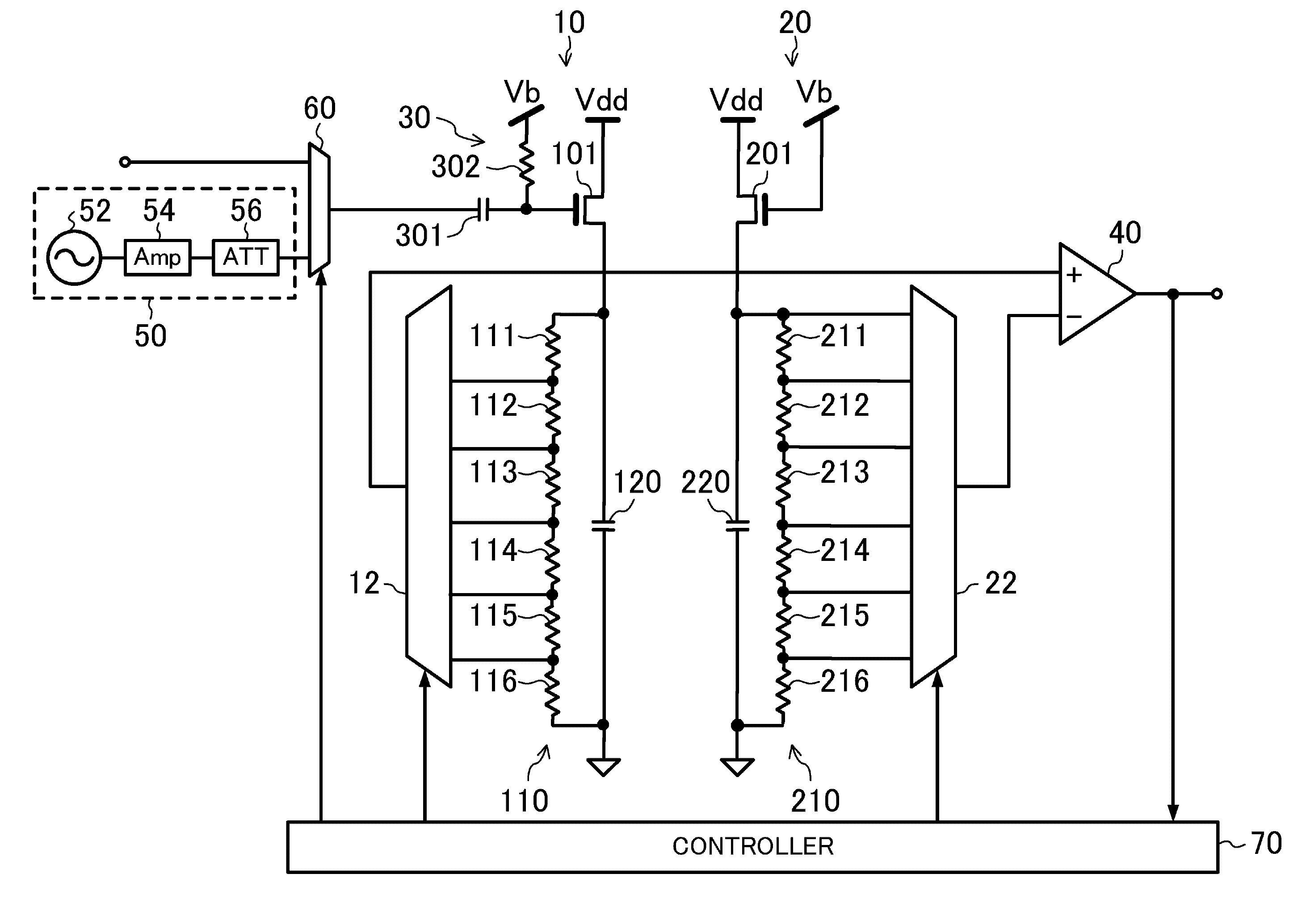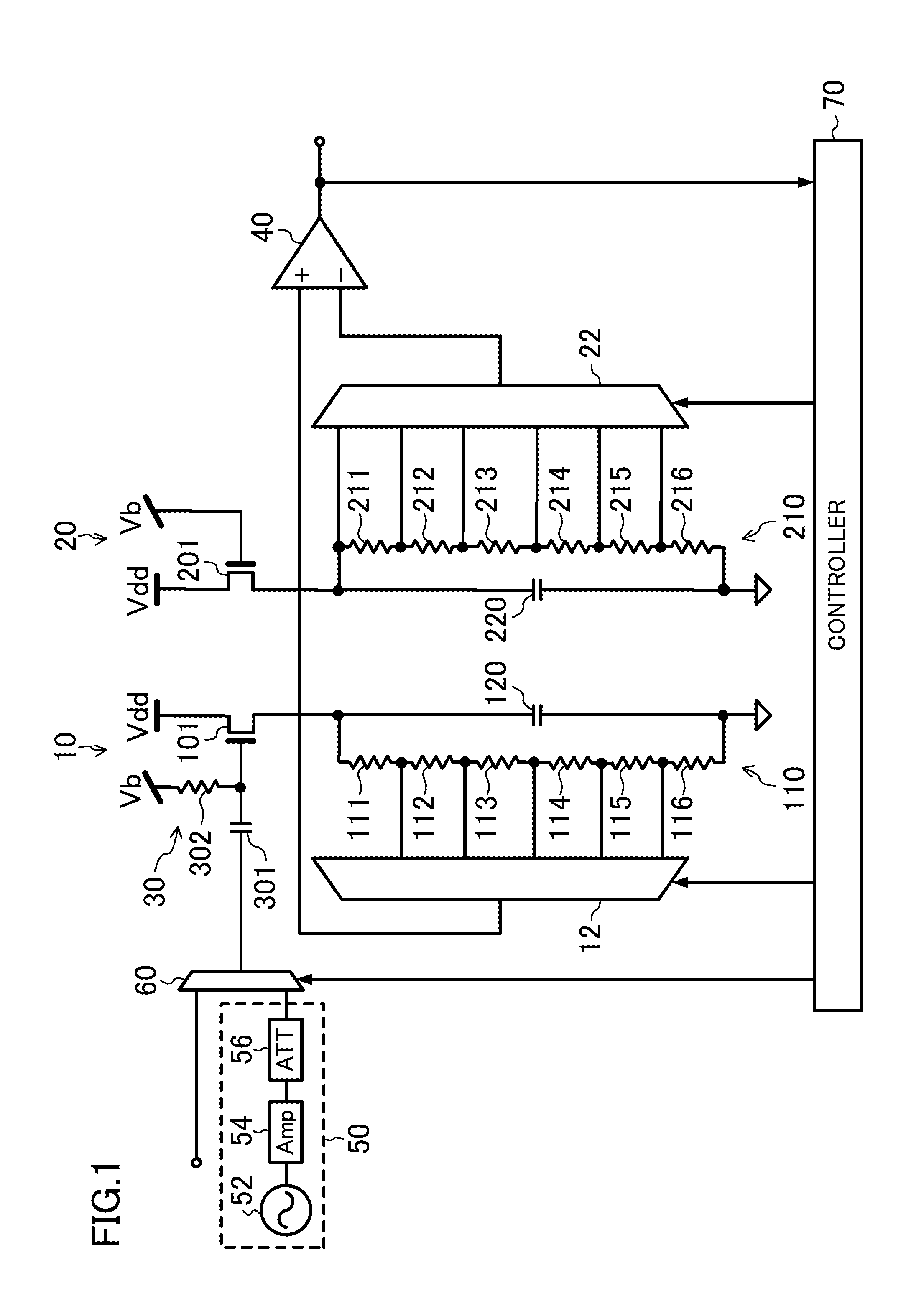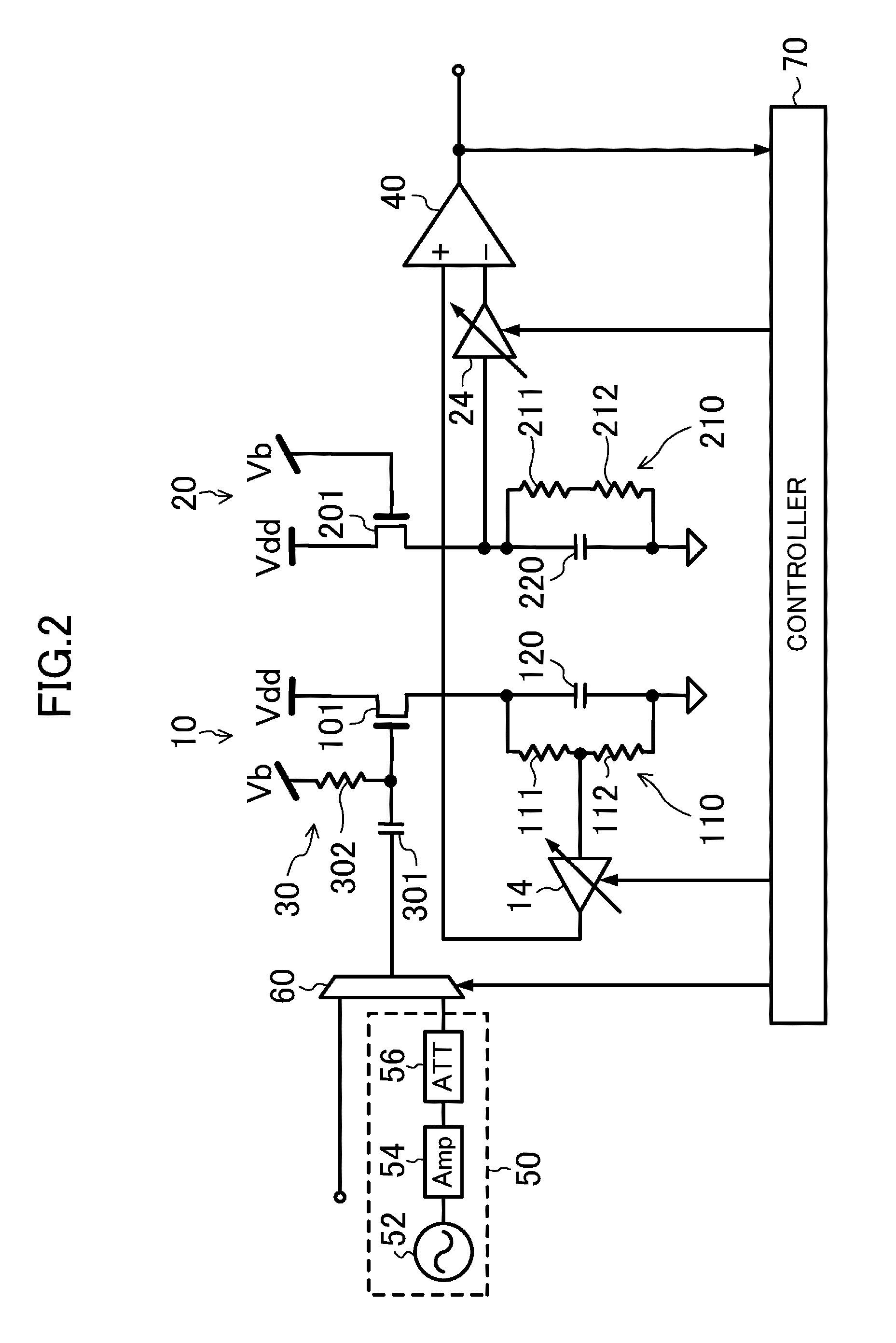High frequency power detector circuit and radio communication device
a detector circuit and high frequency technology, applied in the field of detector circuits, can solve problems such as errors in detected power levels and detection errors, and achieve the effects of improving resistance to variations, high frequency power, and raising the precision of high frequency power detection
- Summary
- Abstract
- Description
- Claims
- Application Information
AI Technical Summary
Benefits of technology
Problems solved by technology
Method used
Image
Examples
first embodiment
[0024]FIG. 1 shows the structure of a high frequency power detector circuit according to a first embodiment. In the envelope detector circuit 10, a drain of an N-channel field effect transistor 101 is connected to a supply voltage Vdd, and a resistance row 110 including six serially-connected resistive elements 111, 112, 113, 114, 115, and 116 and a capacitative element 120 are connected to a source of the transistor 101 in parallel. The structure of another envelope detector circuit 20 is the same as that of the envelope detector circuit 10. That is, in the envelope detector circuit 20, a drain of an N-channel field effect transistor 201 is connected to a supply voltage Vdd, and a resistance row 210 including six serially-connected resistive elements 211, 212, 213, 214, 215, and 216 and a capacitative element 220 are connected to a source of the transistor 201 in parallel. In the envelope detector circuits 10 and 20, corresponding elements have the same characteristic value. For ex...
second embodiment
[0039]FIG. 2 shows the structure of a high frequency power detector circuit according to a second embodiment. The difference from the structure of the first embodiment is described below in detail. In the envelope detector circuit 10, a drain of an N-channel field effect transistor 101 is connected to a supply voltage Vdd, and a resistance row 110 including two serially-connected resistive elements 111 and 112 and a capacitative element 120 are connected to a source the transistor 101 in parallel. The structure of another envelope detector circuit 20 is the same as that of the envelope detector circuit 10. That is, in the envelope detector circuit 20, a drain of an N-channel field effect transistor 201 is connected to a supply voltage Vdd, and a resistance row 210 including two serially-connected resistive elements 211 and 212 and a capacitative element 220 are connected to a source of the transistor 201 in parallel. In the envelope detector circuits 10 and 20, corresponding element...
third embodiment
[0045]FIG. 3 shows the structure of a high frequency power detector circuit according to a third embodiment. The high frequency power detector circuit of the present embodiment is the high frequency power detector circuit of FIG. 1 in which the selector 12 is omitted, and a variable gain amplifier 16 is provided between the input selector 60 and the level shifter 30. The difference from the structure of the first embodiment is described below in detail.
[0046]The detector 40 detects an intermediate terminal voltage of the resistance row 110 of the envelope detector circuit 10 with reference to an output voltage of the selector 22. Although a voltage at a connection point of the resistive element 115 and the resistive element 116 is detected here, another intermediate terminal voltage may be detected.
[0047]The controller 70 controls the variable gain amplifier 16, the selector 22, and the input selector 60 to calibrate the high frequency power detector circuit. Specifically, the contr...
PUM
 Login to View More
Login to View More Abstract
Description
Claims
Application Information
 Login to View More
Login to View More - R&D
- Intellectual Property
- Life Sciences
- Materials
- Tech Scout
- Unparalleled Data Quality
- Higher Quality Content
- 60% Fewer Hallucinations
Browse by: Latest US Patents, China's latest patents, Technical Efficacy Thesaurus, Application Domain, Technology Topic, Popular Technical Reports.
© 2025 PatSnap. All rights reserved.Legal|Privacy policy|Modern Slavery Act Transparency Statement|Sitemap|About US| Contact US: help@patsnap.com



